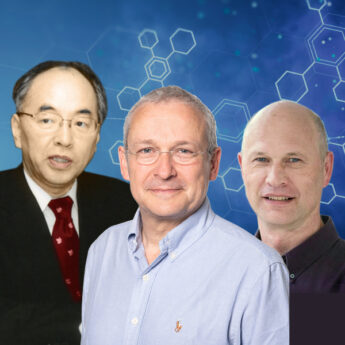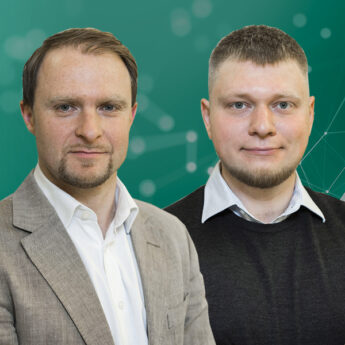- Pupils learned the UK’s role in helping nuclear clean-up
- Increased pupils’ interest in science-related study and careers
- Curiosity sparked in Japanese language, food, culture
Explaining to young people an accident that has been ranked top of the International Nuclear and Radiological Event Scale and its impact is not easy. But that is the task Keith Franklin, first secretary (nuclear) at the British Embassy Tokyo, took on as part of I’m a Scientist Get Me Out of Here, a programme for UK schools.
“To us in Japan the Fukushima Daiichi accident is a very recent event”, Franklin told BCCJ ACUMEN. “But some of the younger students on the programme had never heard of it”. And that, he explained, involved him switching from his usual approach of answering intricate questions on the Fukushima Daiichi Nuclear Power Plant disaster to going back to basics: outlining what it was, how it happened and what it all means.
Yet, despite the difficult subject matter, the pupils were keen to lap up the information, much to the organisers’ delight.
Designed to engage young people in science, I’m a Scientist was launched in 2008. It operates as a free online event where pupils interact with panels of handpicked scientists in various zones, exploring topics from ageing and heart health to extreme pressure and spectroscopy, as well as general science.
“The aim is to get school students to talk to real scientists so that they gain from having their own personal connection with science”, said Antony Poveda from the project. “Thanks to many funders and fantastic feedback, it has grown from one pilot zone of five scientists to a three-times-a-year UK event with international versions”.
The most recent edition—which took place over two weeks in November 2015—was the most extensive yet. For the first time, not all the schools that applied could be accommodated. Efforts are now underway to prioritise schools that lack regular engagement in science, technology, engineering and maths (STEM).
Efforts to boost studies of, and careers in, STEM subjects have been promoted increasingly in recent years by government, industry, business and academia.
Since 2010, the British government has stepped up its efforts in the area due to the major contribution science and research make to the prosperity of the UK. With the aim of engaging the public in science and developing not only skilled practitioners in STEM fields, but also people who value the subjects, the work includes holding events to raise public awareness of science-related issues as well as funding four national academies and various events.
Sparking children’s interest in science from a young age is thought to be one of the most affective methods of achieving these goals—one reason online I’m a Scientist events have been so well supported.
Aside from main funding from the Wellcome Trust, an independent global charitable foundation headquartered in London, the programme receives funds from other British organisations, including the Science & Technology Facilities Council, the Royal Society of Chemistry, the Institute of Physics and Engineering in Medicine, and the Biochemical Society.
Making connections
“Explaining science to non-specialists is something I really enjoy doing so I thought, ‘I’ll give that a shot’”, said Franklin, who applied for the position after reading a communication from the Royal Society of Chemistry.
“I was able to go into much more detail than I expected with young people than just giving a short answer”, he added. “Some questions demonstrated that they understood quite a lot, and there were definitely some budding scientists among them”.
Franklin and four other scientists—currently working in roles outside academia and research that require science expertise—made up the panel for the Osmium Zone, funded by the Institute of Physics.
“Keith was a perfect example of how studying physics at school can lead to many different careers”, said Poveda. “He now works to bring his understanding of science and long-term experience with radiation to a new field: diplomacy.
“There were often questions in live chats about why each scientist had pursued their current job”, he added. Coming into contact with people like Keith shows just how far studying science can take you”.
After reading Franklin’s specially created child-friendly CV, the students were also deeply interested in why he is in Japan.
“I explained that I was introducing clever gadgets into Fukushima Daiichi to help them with the clean-up”, said Franklin.
One student asked if the damage caused by Fukushima Daiichi could “disappear completely”. “I said, ‘It depends on what you mean by disappear. For example, is the end point of the clean-up to store everything in a safe and secure manner on the site, to take it somewhere else or return the site to nature? Many options are possible; you just need to decide the most sensible one’”.
Aside from recording the personal feedback from pupils on the project, organisers carried out research to chart the project’s impact on pupils. They asked them the same four questions before and after they had participated, and placed results on a scale ranging from +2 (very strong likelihood) to -2 (very weak likelihood).
For Year 10 and 11 students, there was an average +0.78 change in the likelihood of them looking for a job that uses science.
On average, 481 students (up from 353) logged in to each zone, and 956 questions (up from 717) were asked per zone.
Franklin’s participation also resulted in cultural understanding, with questions posed to him also covering Japan’s language, food and culture.
While the time difference posed a challenge, Franklin said he would take part in the programme again, not only to boost interest in STEM subjects, but also to provide him with insights.
“I learned just as much about my communication style as the children probably did about science”, he said, adding that the programme was about “showing that scientists are normal people”.







